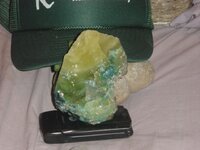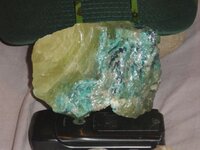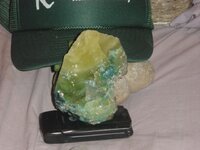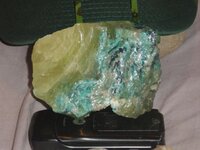gods country girl
Full Member
- May 18, 2007
- 213
- 12
- Detector(s) used
- whites mxt
- Primary Interest:
- All Treasure Hunting
i have this posted in the what is it forum.i found it in a pile of rocks.I was thinking it was a chunk of glass, but it is very heavy.anyone have any ideas on what it could be??









